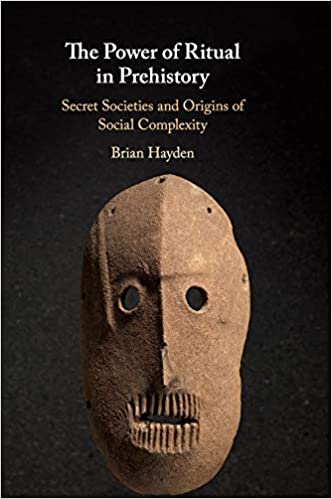There are two radically different views about the nature of Upper Paleolithic societies. The traditional view holds that Upper Paleolithic societies were nomadic, egalitarian groups living off scarce resources comparable to the ethnographic hunter/gatherers like the Bushmen in southern Africa, Australian Aborigines, or some Eskimo groups. The newer view, which I represent, holds that in favorable locations, some Upper Paleolithic groups were at least seasonally sedentary, produced surpluses and wealth, and displayed important inequalities. In this view, they were comparable to more complex ethnographic hunter/gatherers like those of the Northwest Plateau, many California Indians, and the Japanese Ainu.
Adopting this newer perspective radically changes our understanding of life in the Upper Paleolithic. Notably, we must ask such questions as what strategies ambitious individuals might have developed, and whether secret societies were one of those strategies. If so, what roles they could have played in creating social and economic inequalities. Secret societies were certainly common ethnographically in the more complex kinds of hunter/gatherers so that secret societies might have existed in complex groups of the Upper Paleolithic. I suggest that the painted caves of the period provide some of the most compelling arguments for the presence of secret societies 12,000-30,000 years ago in the Upper Paleolithic of Southwestern Europe.
Brian Hayden is an honorary research associate at the University of British Columbia (Canada), a professor emeritus of archaeology at Simon Fraser University, in British Columbia, and a Fellow of the Royal Society of Canada. He has had a longstanding interest in understanding what artifacts from the past can tell us about the societies and cultures that left things behind in the archaeological record. He went to Australia to study what Aboriginals of the Western Desert used stone tools for. He carried out a major study of traditional material culture in the Maya Highlands and it’s relation to social and economic roles of households. His last ethnographic study involved the role of feasting in traditional Southeast Asian societies and how feasting can be inferred from archaeological remains. He has also spent the last 30 years excavating at a large housepit village in the Interior of British Columbia. He is author of numerous books and articles, including:
Shamans, Sorcerers, and Saints: A Prehistory of Religion
Archaeology: The Science of Once and Future Things
The Power of Feasts
and, most recently, The Power of Ritual in Prehistory: Secret Societies and the Origins of Social Complexity.


